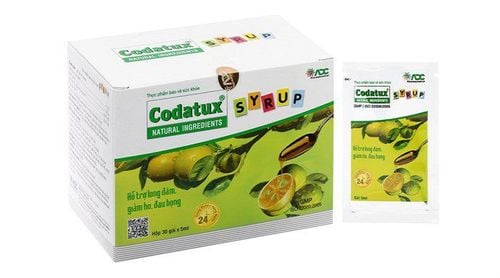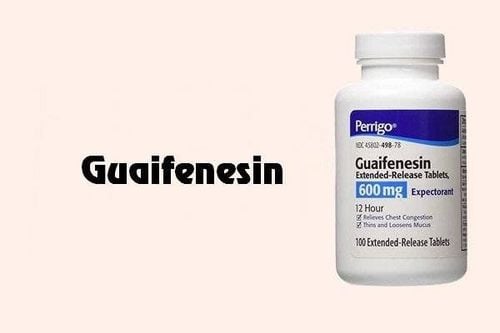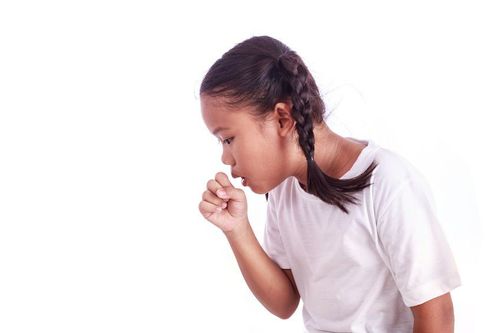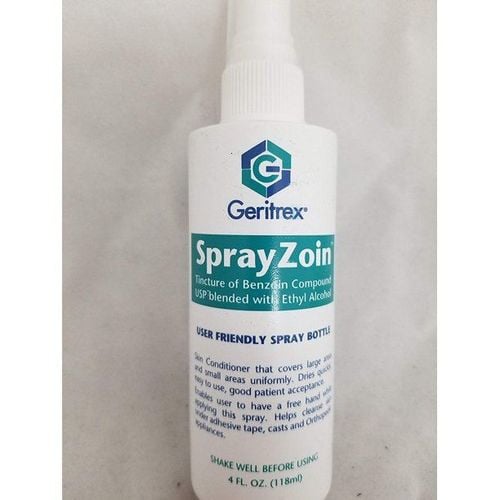This is an automatically translated article.
Acute subglottic laryngitis is diagnosed when symptoms persist for less than 3 weeks. Clinical manifestations will depend on the cause, the affected larynx as well as the age of the patient. Acute subglottic laryngitis in children is often more severe than in adults, because the laryngeal aperture is smaller in children.
1. What is acute subglottic laryngitis?
Laryngitis is an inflammatory process that occurs in the human larynx. This inflammation may or may not be due to infection. Laryngitis can also develop acutely or chronically and is common with sudden weather changes.
Acute laryngitis is called when symptoms persist for less than 3 weeks. Clinical manifestations will depend on the cause, the affected larynx as well as the age of the patient.
Acute subglottic laryngitis, also known as Croup, is a common disease in children from 6 months to 5 years old. Acute subglottic laryngitis in children is often more severe than in adults, because the laryngeal aperture is smaller in children.
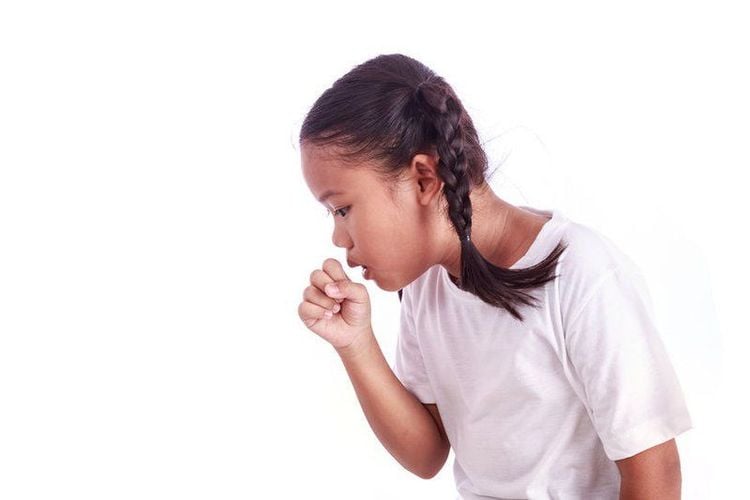
Viêm thanh quản là một quá trình bị viêm xảy ra ở thanh quản con người
2. Diagnosis of acute subglottic laryngitis
The diagnosis of acute subglottic laryngitis is usually based on clinical and subclinical symptoms such as laryngoscopy, X-ray,... These symptoms include:
Functional symptoms:
Symptoms of acute subglottic laryngitis in children: In terms of symptoms, children will usually have the onset of fever (maybe mild fever), cough and runny nose. After about 1 to 2 days, the child suddenly becomes hoarse, has difficulty breathing in the larynx; Functional symptoms of acute subglottic laryngitis in adults: For adults, when suffering from acute subglottic laryngitis, the patient may also have initial symptoms such as swollen lymph nodes in the neck, swallowing. pain, body aches, stuffy and runny nose. The disease usually comes on suddenly and gets worse about 2-3 days later, making the patient tired and the voice becomes more hoarse. Physical symptoms:
For children, the doctor needs to examine gently and quickly. Laryngoscopy should not be given to children at this time, because it will cause the child to be stimulated, leading to laryngospasm, so the difficulty of breathing will be aggravated; The common physical symptoms of acute subglottic laryngitis are low-grade fever and headache. Hoarseness or difficulty pronouncing. Sore throat, cough irritation. Cough he grandfather in children.

Việc chẩn đoán viêm thanh quản cấp tính hạ thanh môn thường dựa vào các triệu chứng lâm sàng và cận lâm sàng
Laryngeal dyspnea is more common in children. The classification of laryngeal dyspnea includes:
Children only have hoarseness, dyspnea on exertion and stridor when crying are signs of grade I laryngeal dyspnea; Laryngeal dyspnea grade II and IIA when the patient has difficulty breathing even at rest and signs of stridor appear when lying still; In grade IIB, patients often show signs of IIA implantation with rapid breathing, chest indrawing; Grade III is the most severe, grade III laryngeal dyspnea signs include grade IIB symptoms with irritability, irritability, or cyanosis. Laboratory tests:
Blood count test; In case of suspicion of leukocytosis, a throat swab should be performed to rule it out. Straight neck radiograph: There is a steeple sign in cases of hypoglottic stenosis. In addition, in some cases, laryngoscopy with flexible bronchoscopes or optical bronchoscopes can be used to differentiate airway foreign bodies and recurrent or failed laryngeal dyspnea. internally medical treatment. If laryngoscopy is in children, it needs to be done quickly.
3. Treatment of acute subglottic laryngitis
In principle of treatment, when treating acute subglottic laryngitis, it is necessary to exclude foreign bodies in the airways, then restore airway patency, and at the same time, it is necessary to ensure ventilation as well. as blood oxygenation. Treatment will be based on the extent of the disease causing it. Specifically:
Acute hypoglottic laryngitis - mild laryngitis - grade I laryngitis
For outpatient treatment, ask the patient to rest, limit speech and should drink plenty of water and eat food soft, easy to swallow; Use antipyretic (Acetaminophen 10 - 20mg/kg) and expectorant (Acetylcysteine 100mg - 200mg x 2 times/day) to treat the symptoms caused by the disease; Instruct the patient in case of severe symptoms, they should immediately return to the doctor. Acute subglottic laryngitis with moderate difficulty in breathing larynx grade IIA
Can give the patient outpatient treatment if the patient is near the hospital; Use antipyretic, expectorant and use more anti-inflammatory corticosteroids; In case the patient shows signs of infection, it is necessary to use more antibiotics for timely treatment; For children, a daily check-up is required. Severe acute hypoglottic laryngitis - grade IIB, grade III laryngitis
In case of severe acute hypoglottic laryngitis - grade IIB, grade III laryngitis requires hospitalization hospital for treatment and care; During the treatment, the patient needs to rest in place; If children have severe acute hypoglottic laryngitis - laryngotracheal dyspnea grade IIB, grade III, it is necessary to keep the child or parents to hold, to avoid crying too much because it will lead to edema of the larynx. management increased; Give the patient oxygen, maintain SaO2 92 - 96%; Use drugs to treat symptoms and use anti-inflammatory corticosteroids in injection form, repeat 6 - 12 hours in case of necessity; If the patient has a lot of difficulty breathing, the doctor should use the Adrenaline nebulizer 1/1000 2 - 5ml, repeat 30 minutes - 1 hour in case of necessity; Using injectable third-generation Cephalosporin antibiotics such as ceftriaxone at a dose of 75-100mg/kg/day, cefotaxime at a dose of 100-200mg/kg/day; In case the patient is lethargic, exhausted or fails in medical care and treatment, it is necessary to use the method of endotracheal intubation, tracheostomy. Prioritize intubation and extubation or canula should be performed after 24-48 hours if the patient's condition is more stable.

Viêm thanh quản cấp tính hạ thanh môn nếu không điều trị sớm và đúng phác đồ thì bệnh có thể dẫn đến tình trạng viêm thanh quản mạn tính
Acute hypoglottic laryngitis if not treated early and correctly, the disease can lead to chronic laryngitis, difficult to fully recover from treatment. In severe cases, if not promptly treated, the patient can experience respiratory failure, more dangerous than death. Therefore, the prevention of acute subglottic laryngitis is extremely necessary.
To prevent disease, should keep the respiratory tract warm for children and adults when the weather changes seasons. Avoid smoking or should not be exposed to secondhand smoke. If someone has a respiratory infection, they should not come into close contact with that person, if contact is mandatory, they should wear a mask according to regulations. In addition, the Haemophilus influenzae vaccine is recommended to significantly reduce the incidence of acute subglottic laryngitis.
Need to take the patient to a reputable hospital for examination and treatment as soon as there are signs of acute laryngitis. Currently, Vinmec International General Hospital is one of the leading prestigious hospitals in the country, trusted by a large number of patients for medical examination and treatment. Not only the physical system, modern equipment: 6 ultrasound rooms, 4 DR X-ray rooms (1 full-axis machine, 1 light machine, 1 general machine and 1 mammography machine) , 2 DR portable X-ray machines, 2 multi-row CT scanner rooms (1 128 rows and 1 16 arrays), 2 Magnetic resonance imaging rooms (1 3 Tesla and 1 1.5 Tesla), 1 room for 2 levels of interventional angiography and 1 room to measure bone mineral density.... Vinmec is also the place to gather a team of experienced doctors and nurses who will greatly assist in diagnosis and detection. early signs of abnormality in the patient's body. In particular, with a space designed according to 5-star hotel standards, Vinmec ensures to bring the patient the most comfort, friendliness and peace of mind.
Please dial HOTLINE for more information or register for an appointment HERE. Download MyVinmec app to make appointments faster and to manage your bookings easily.




